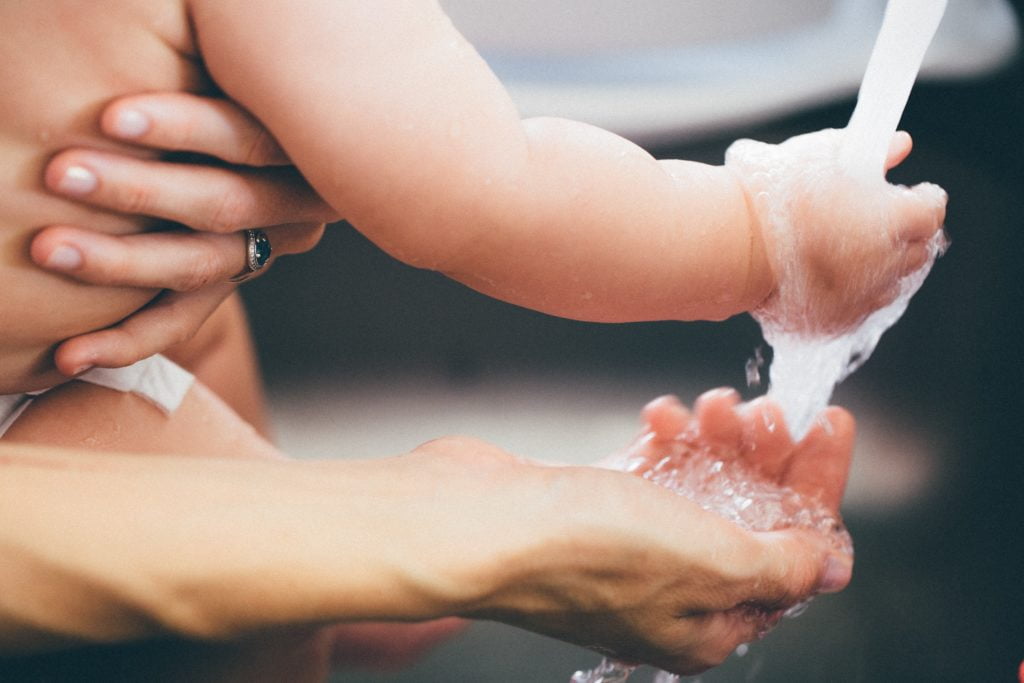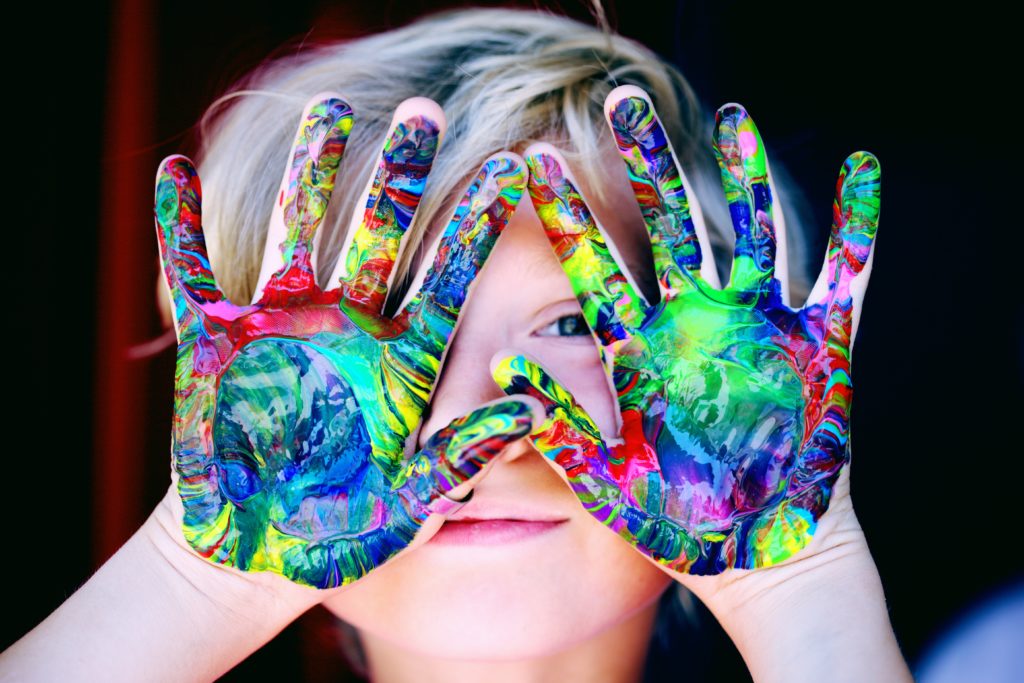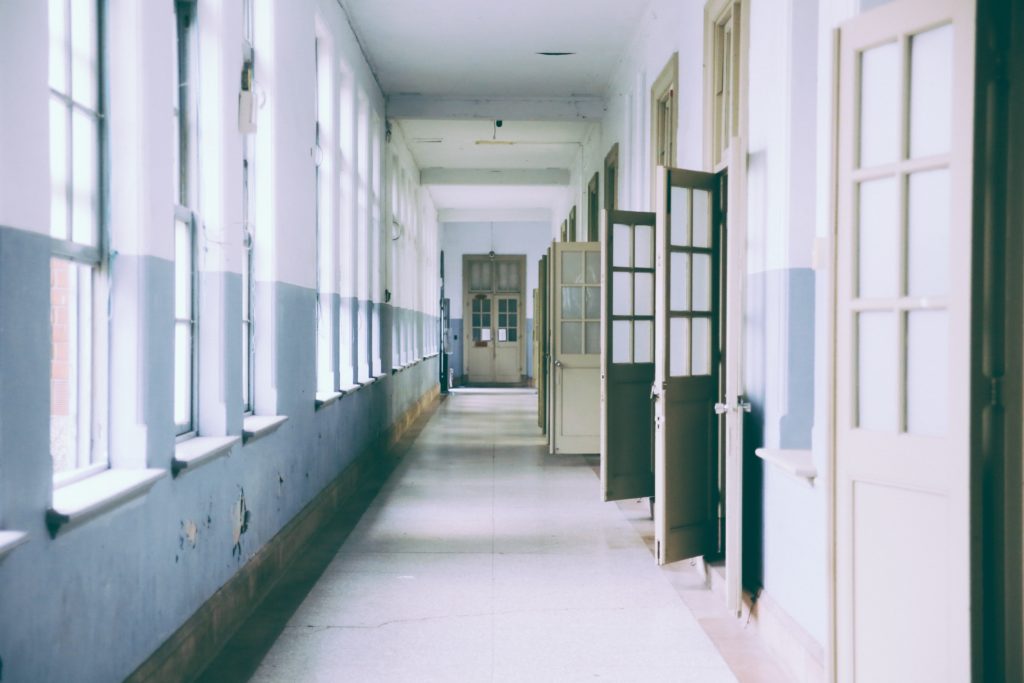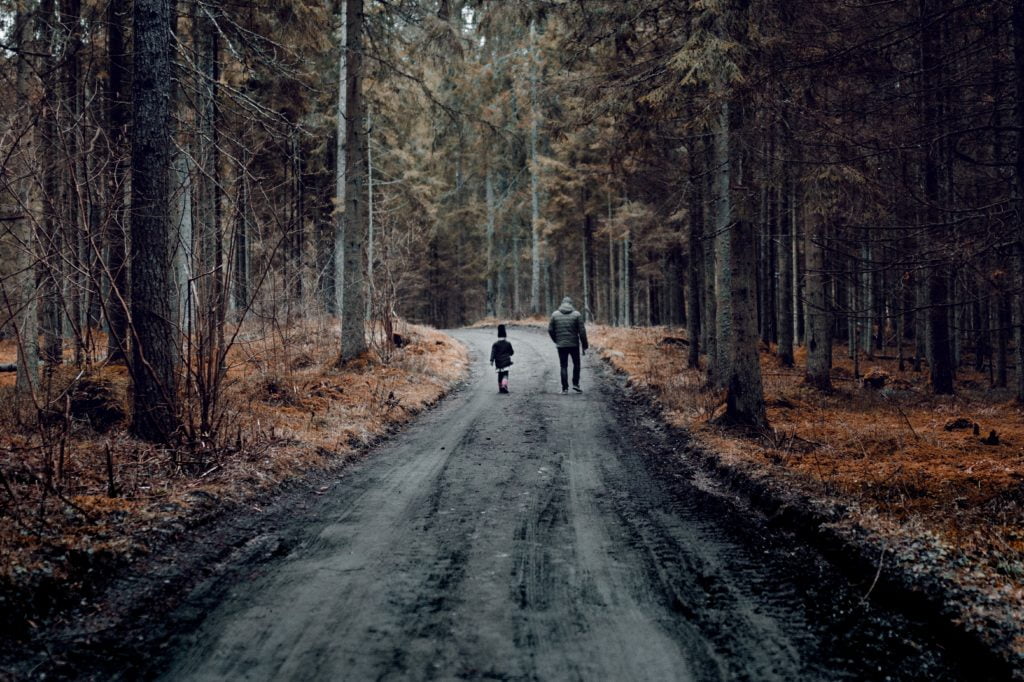Cancellation of big events and encouragement of self-isolation
Parents working from home, and big events suspended. Advice to avoid overcrowded places and close contact with other people. School trips cancelled, constant covid testing, and potential school closures in the future. What’s going on?
For children, it might seem confusing that their personal reality is on pause.
Everyone seems to be talking about it: newspapers, news, TV and radio, adults… There are so many opinions, images and reports floating around that for kids it can be tough to separate fact from fiction. Feelings such as stress, worry, and anxiety are heightened, but having open discussions with your children can help to reduce any potential distress.

But what is exactly is coronavirus?
Scientific jargon is complicated for children so keep your language simple, age-appropriate and friendly.
In short: Coronavirus, also known as COVID-19, is a new virus, which can cause symptoms such as fever, difficulty breathing and body pain very similar to flu.
COVID-19 is a stronger strain of the flu. Both the common flu virus and COVID-19 come from the same family of illnesses.
How do I explain a virus we still know so little about?

COVID-19 was previously unknown until December last year when it first officially appeared in China. Its newness means that in-depth knowledge regarding the virus is still unclear.
Uncertainty may foster feelings of worry for children. Make sure to reassure your children that top scientists and doctors are in the process of developing a vaccine, which is why in the meantime prevention is so important!
Your child may naturally have questions. Invite them to discuss their queries and concerns openly with you or try fun activities such as drawing to open up dialogue. If your child is too young to understand the virus, make an effort to wash your hands in front of them regularly and encourage good hygiene practice.
There is no need to dwell on the number of deaths caused by COVID-19 with your children, as it fosters unnecessary panic.
Of course, children are naturally curious and may want to know how many people have died. However, this should be coupled with an explanation that it is mainly elderly people or people with existing serious health conditions.
Reassure your children that young people are much less likely to get the virus than adults. So far, only 1 in 6 people become seriously ill. The people most at risk are elderly and those with existing serious medical conditions. Remind your children they can always ask you questions and share their worries with you.
What are the phases of prevention?
Containment Phase: detecting cases and tracing all contacts to avoid the spread of the disease.
Delay Phase: slowing the spread of the virus and pushing peak infection towards the summer months.
Research Phase: intensifying research to learn more about the disease and actions to reduce its impact on people
Mitigate Phase: Providing hospitals with the support needed to maintain their services as the virus spreads, and to help those who are ill in the community.
Most of us are not science experts, and it can be confusing for a child as to why certain measures, such as schools closing, are taking place at different times around the world. Compare the phases to steps a child would understand, for example the growth of a tree or the steps to bake a cake.
A child understands that you pick a fruit at the right time: when it’s ripe. Try to explain that similarly, measures to tackle coronavirus must also be done at the right time. Alternatively, activities such as drawing may help a child visualise what is going on around them.
Disrupting normal routines can feel unsettling for children as the UK shifts from measure to measure to minimise the impact of COVID-19. Keep an open dialogue, especially with older children, and try to keep familiar routines and a sense of regular structure as normal as possible.
What are the symptoms of Corona Virus?
The virus has varied symptoms, but as already mentioned, they are very similar to the flu. Symptoms can include: cough, fever (above 37ºC), body aches, sore throat, a runny nose and difficulty breathing (in severe cases).
How do you know if it’s just the flu or COVID-19 virus?
If you think you or your child has contracted Corona Virus, rather than go to the GP, hospital or pharmacy, you should contact the dedicated 111 NHS online coronavirus service. You will be told the right action to take.
How Contagious is Covid-19 & What are the forms of transmission?
Investigations into forms of contagion are still in progress. However, it is certain that COVID-19 is contagious. The virus can be transmitted by air, physical contact and unhygienic surfaces.
- By air: saliva, phlegm, and droplets from sneezing, coughing, and speech
- By contact: kissing, handshakes and hugging unhygienic surfaces: mobile phones, door handles, handrails, buttons, keyboards, public transport surfaces, public toilets
How to protect your children from the virus?
Respecting the hygiene guidelines suggested by experts is very important:
- Prevention starts with hand washing. Encourage your children to wash their hands several times a day, especially if you have been out and about. Bring sanitiser out with you.
- Be a role model! Make sure your children see you washing your hands regularly.
- Rub your hands with soap and wash with warm water for at least 20 seconds (you could use a timer to help!)
- Avoid close contact with people who are unwell
- Avoid touching your face with unwashed hands
- Catch your coughs and sneezes with disposable tissues, and if you do not have a tissue at hand, use your sleeve. Make sure to throw the tissue away after.
Make hygiene playful!

1) Sticker Chart
Encourage your children to wash their hands by rewarding them with a sticker each time they wash their hands. The cleaner they are, the more stickers earnt!
2) Songs!
Encourage your children to wash their hands for the recommended time by helping your child make up a song that lasts for 20 seconds. You could use the tune of “Twinkle twinkle Little Star,” “Happy Birthday” or even a pop-song. Explain that they can stop washing their hands once they have finished the song.
3) Test the Beet!
Anyone who blows their nose with a tissue should wash their hands afterwards. But how do we explain the importance of this to little ones?
Try the technique, “Test The Beet” to prove the need to wash your hands after using a tissue.
Ask your child to pick up a pickled beetroot with a tissue. Your child’s hands will also turn red- which shows that liquid (and therefore the virus) easily reaches your hands even when using a tissue.
Knowledge is key to protection
One of the most important things to do is to remain calm and rational. Remember that knowledge is the first step to protecting yourself and others. Immediately sharing sensationalist information with your children generates panic and confusion.
Children have the right to know about what is happening in the world, but parents equally have the responsibility to mitigate unnecessary distress or fear. Talk about what is going on in the world from reliable sources in a friendly, simplified and open manner.

Keep a familiar routine
With exposure to worrying reports, statistics and images, it’s easy to feel like we are surrounded by impending doom or crisis. Children may find it difficult to distinguish between what they hear and see online or on TV, and their own personal reality. Keep your home environment stress-free by scheduling time for fun activities and avoiding overexposure to the news.
Children are calmed by a sense of familiarity, so try to stick to a regular routine and set times.
Encourage your children to have the right attitude

Children mirror the attitude of their parents, therefore it’s your responsibility to transfer a calm and understanding attitude to your children. Remind your child that it is not worth being upset, teasing others or engaging in disrespectful behaviour when talking about COVID-19.
In recent weeks, we have seen episodes of prejudice and intolerance. Make sure your children understand that the virus has nothing to do with your nationality, language or religion.
Take the time to make sure your child is not experiencing or contributing to stigma.
To find out more about Corona Virus and childcare click here
Keep in touch with your elderly relatives
One of the biggest asks in the coming weeks will be the self-isolation of elderly people, which for a lot of children will mean not seeing their grandparents.
Keeping communication channels open between your family and their grandparents is still achievable and very much recommended to avoid feelings of isolation. We are incredibly lucky to live in a world in which technology brings us together. Tools such as Facebook, Whatsapp, Hangouts, Skype, Facetime amongst many more will help keep family ties together.
If you have elderly relatives who are self-isolating, schedule in time for them to chat to the family. Invite them to dinner via video call or ask them to read a story over the phone. Make it fun and lighthearted so both the grandparents and children benefit.
How to deal with a situation in which schools close

Whilst children might be excited at the prospect of no school, for parents, the idea of children at home for a prolonged period of time is understandably quite daunting.
How do I keep a routine? Will my children miss out on education? How will I keep them entertained? These are just a few of the questions that will be floating around many parents minds.
If children are asked to stay at home, it is key to ensure you try to stick to a set routine. This means getting up and starting your day around the time you normally would on a weekday, as well as keeping lunch, dinner and bedtimes familiar.
You could try and make yourself a Daily Schedule!
Children are reassured by a familiar sense of routine, and by sticking to a schedule, parents will also be able to get on with work from home.
Try and fit in fun activities: baking, colouring, theatre, singing or dancing. All these activities will help distract children from potential worry or fear surrounding the virus.

Make sure to keep the news off as much as you can, particularly around your children. Whilst we are lucky to have access to the latest updates, keeping 24h news on will make your home environment tense and uncomfortable. Keep you and your family up to date with what is happening in the world in a controlled and calm manner.
Keep your days varied, schedule in one structured activity a day. It’s impossible to entertain your children 24/7 so anticipate your children to complain about being bored. Remember that ultimately, if your children are entertaining themselves, they are learning essential skills such as being autonomous and creative.
Whilst this is the first time in our lifetime we have encountered anything like this, it’s likely our children will have to deal with many similar situations in their lifetime – our children will remember how we dealt with this, so let’s teach them resilience not fight each other for toilet roll and pasta!

